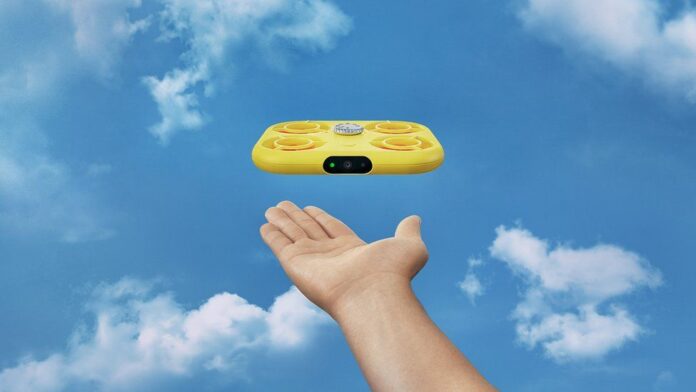Snap, the firm most known for its photo-sharing app Snapchat, has now released a flying camera.
The startup describes Pixy, a small yellow drone, as a “free-flying buddy” that can assist people in capturing photos without using a selfie stick.
The device is available in France and the United States, where drone use is less restricted than in the United Kingdom.
It comes as several social media behemoths ramp up their hardware and augmented reality (AR) offerings.
The Pixy is self-contained, taking video as it flies and wirelessly transferring and saving it to the app.
The selfie drone lands in the palm of your hand at the end of the trip.
Despite not receiving the same level of attention as other social media platforms such as Facebook or Twitter, Snapchat is nevertheless extremely popular.
According to Snapchat, there are 300 million daily active users worldwide. It also claims to have a reach of over 75% of people aged 13 to 34 in over 20 countries.
Snapchat is known for its augmented reality (AR) “lenses” that overlay art on selfies or distort the live image in various ways.
In 2016, Snap released Spectacles, camera-equipped eyewear, which advanced the immersive Augmented Reality experience.
Snapchat CEO Evan Spiegel predicted that Spectacles would one day be as common as smartphones, but the company lost nearly $40 million on the device in 2017. The main causes of the loss were “excess inventory reserves and inventory purchase commitment cancellation charges.”
Since then, the company has released an upgraded AR version of Spectacles, but they are not yet available for purchase.
The introduction of Pixy coincides with the opening of Meta’s first hardware store, which will feature items from Facebook and other major tech companies.
On May 9th, the Meta store in Burlingame, California will open, featuring Ray-Ban AR glasses, the Portal smart camera, Quest, and Beat Saber.
The decision is considered a sign of the company’s continued commitment to virtual reality and the metaverse.

















